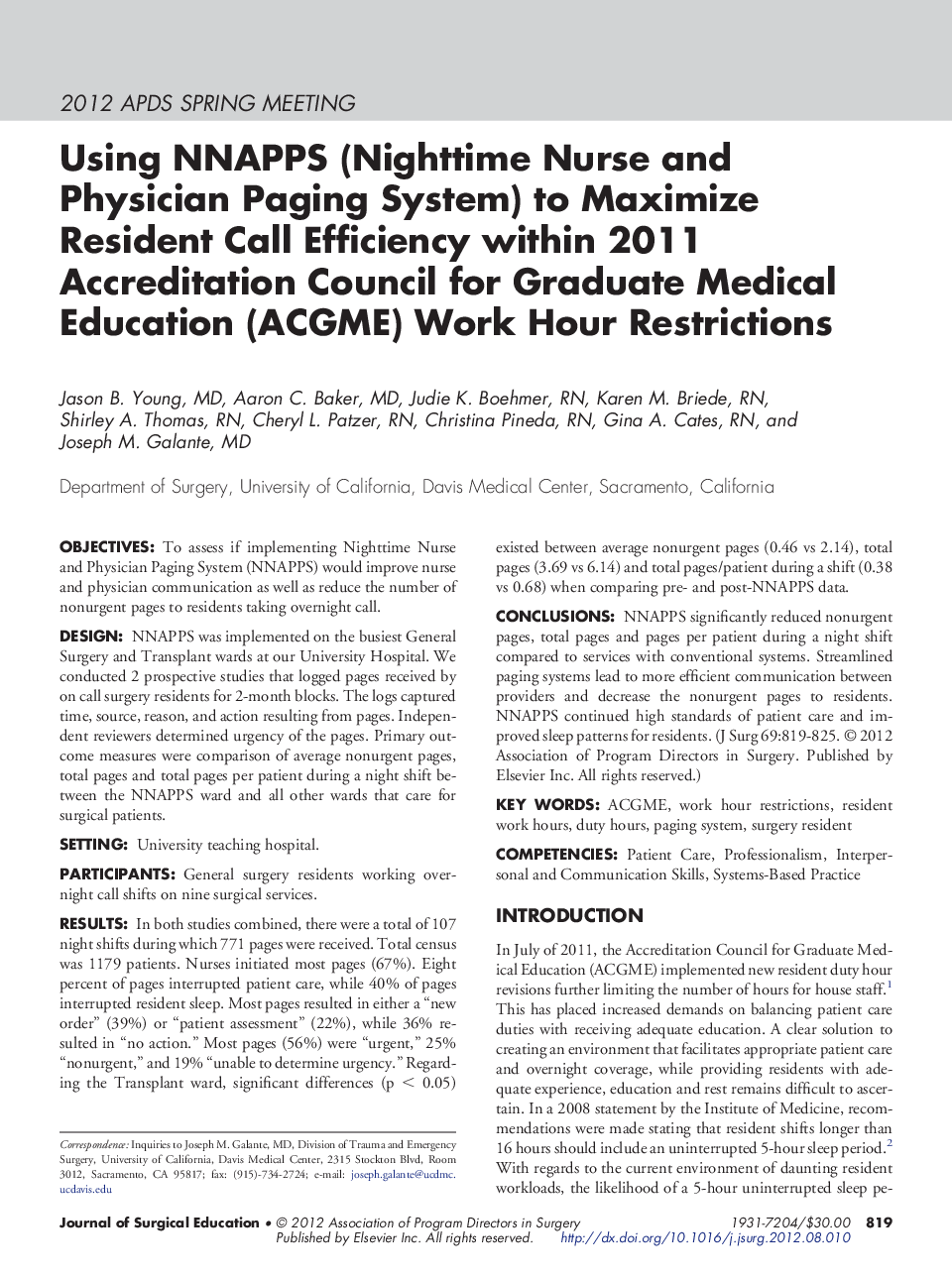| کد مقاله | کد نشریه | سال انتشار | مقاله انگلیسی | نسخه تمام متن |
|---|---|---|---|---|
| 4298265 | 1288347 | 2012 | 7 صفحه PDF | دانلود رایگان |

ObjectivesTo assess if implementing Nighttime Nurse and Physician Paging System (NNAPPS) would improve nurse and physician communication as well as reduce the number of nonurgent pages to residents taking overnight call.DesignNNAPPS was implemented on the busiest General Surgery and Transplant wards at our University Hospital. We conducted 2 prospective studies that logged pages received by on call surgery residents for 2-month blocks. The logs captured time, source, reason, and action resulting from pages. Independent reviewers determined urgency of the pages. Primary outcome measures were comparison of average nonurgent pages, total pages and total pages per patient during a night shift between the NNAPPS ward and all other wards that care for surgical patients.SettingUniversity teaching hospital.ParticipantsGeneral surgery residents working overnight call shifts on nine surgical services.ResultsIn both studies combined, there were a total of 107 night shifts during which 771 pages were received. Total census was 1179 patients. Nurses initiated most pages (67%). Eight percent of pages interrupted patient care, while 40% of pages interrupted resident sleep. Most pages resulted in either a “new order” (39%) or “patient assessment” (22%), while 36% resulted in “no action.” Most pages (56%) were “urgent,” 25% “nonurgent,” and 19% “unable to determine urgency.” Regarding the Transplant ward, significant differences (p < 0.05) existed between average nonurgent pages (0.46 vs 2.14), total pages (3.69 vs 6.14) and total pages/patient during a shift (0.38 vs 0.68) when comparing pre- and post-NNAPPS data.ConclusionsNNAPPS significantly reduced nonurgent pages, total pages and pages per patient during a night shift compared to services with conventional systems. Streamlined paging systems lead to more efficient communication between providers and decrease the nonurgent pages to residents. NNAPPS continued high standards of patient care and improved sleep patterns for residents.
Journal: Journal of Surgical Education - Volume 69, Issue 6, November–December 2012, Pages 819–825